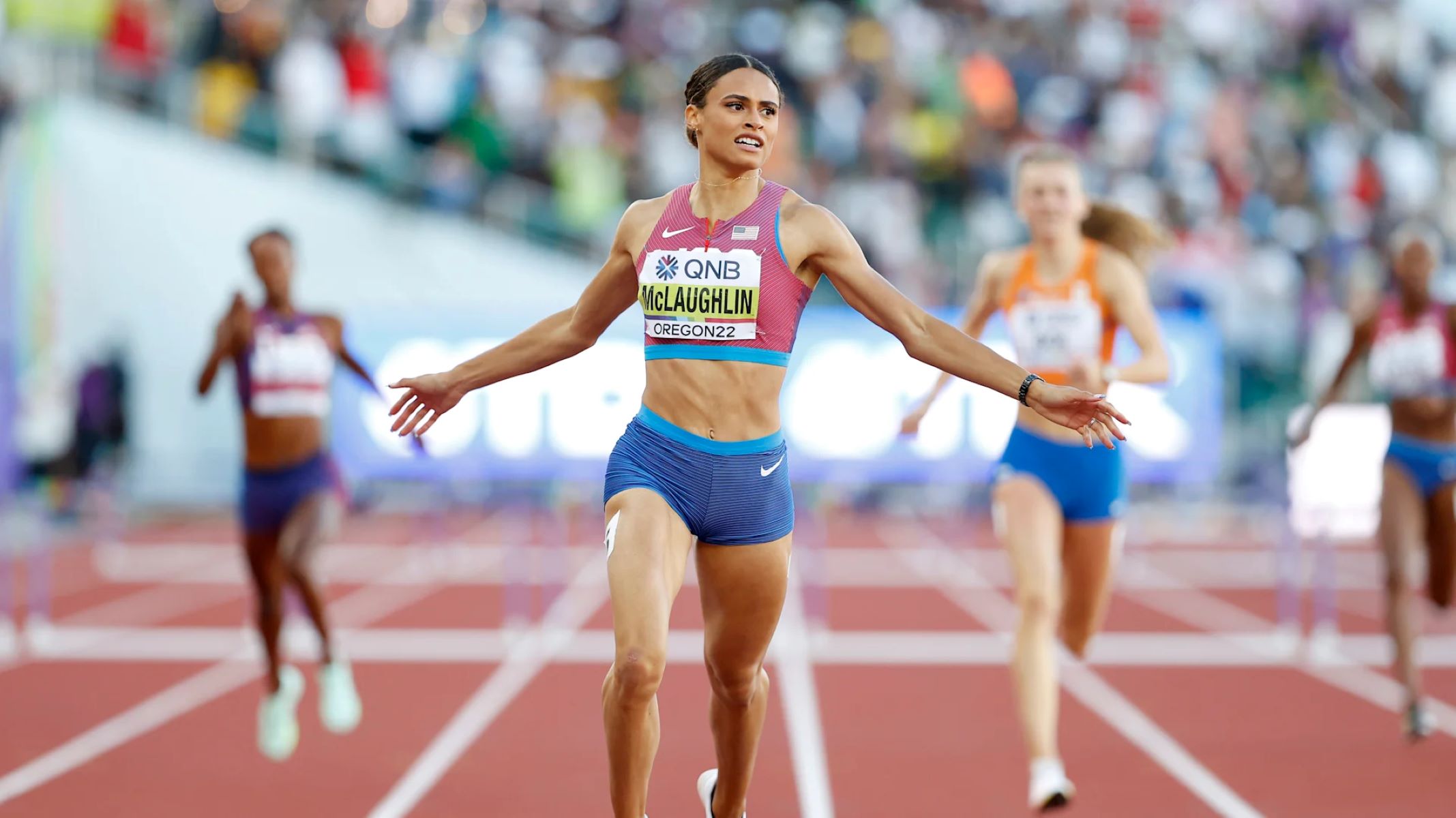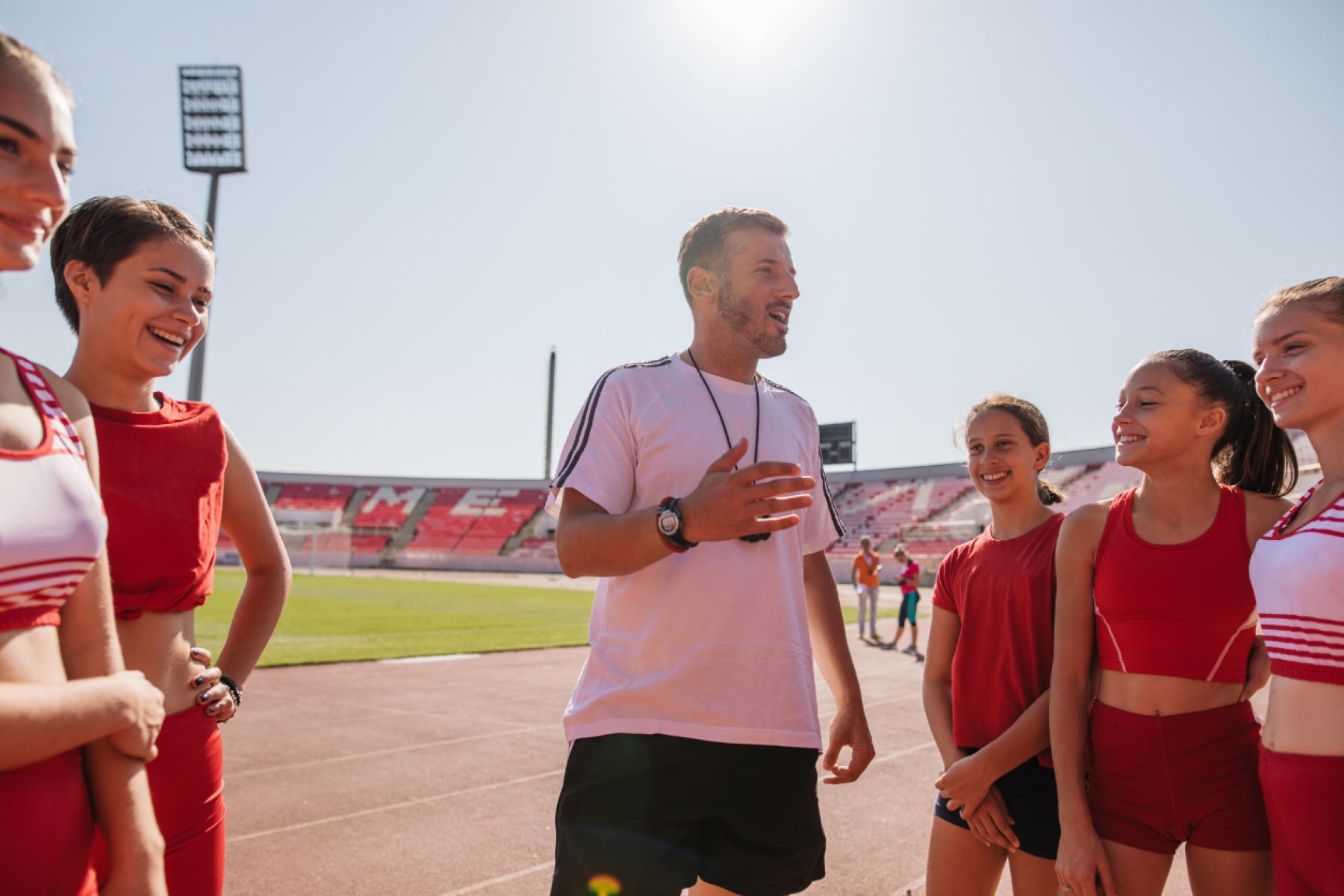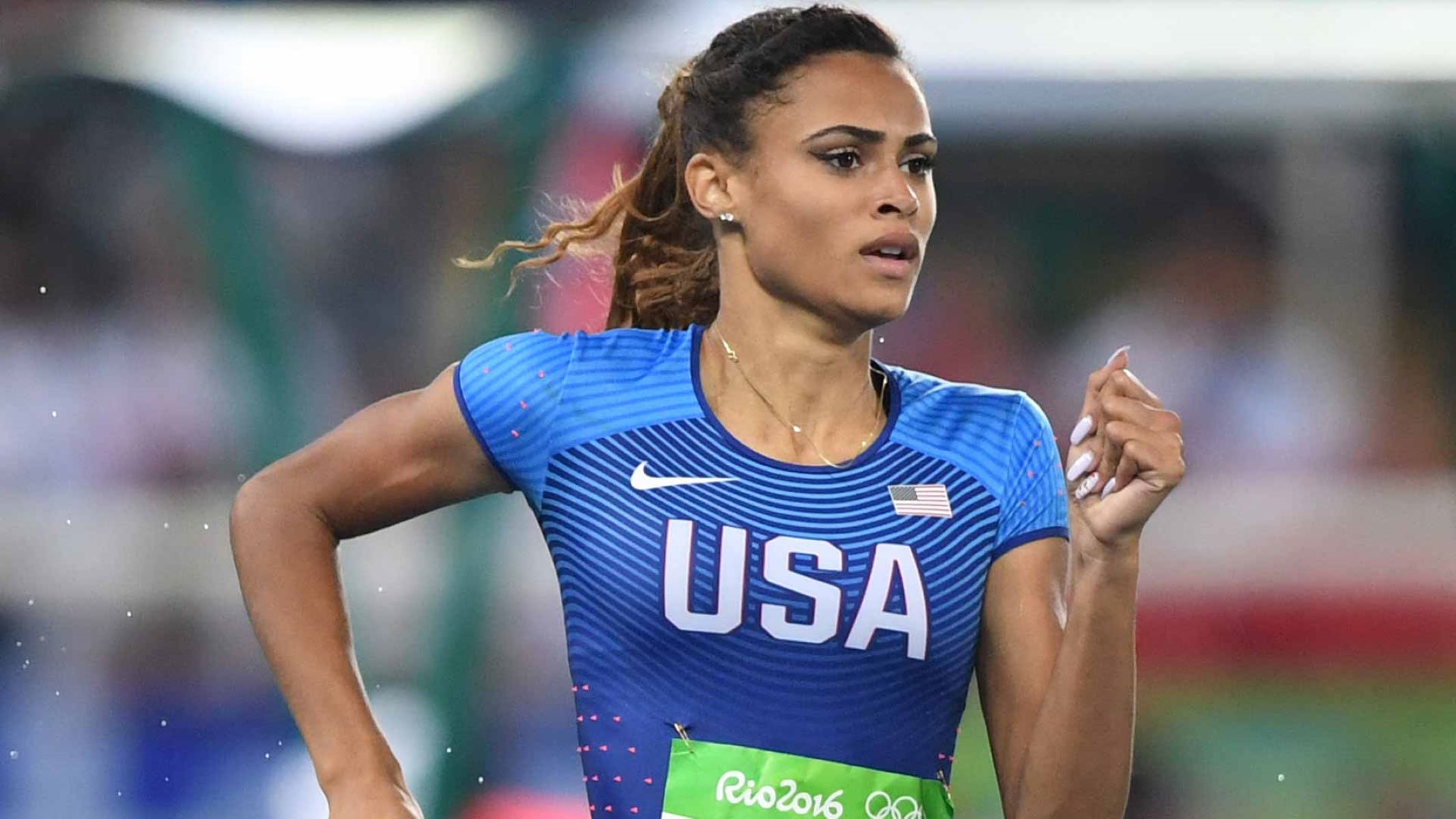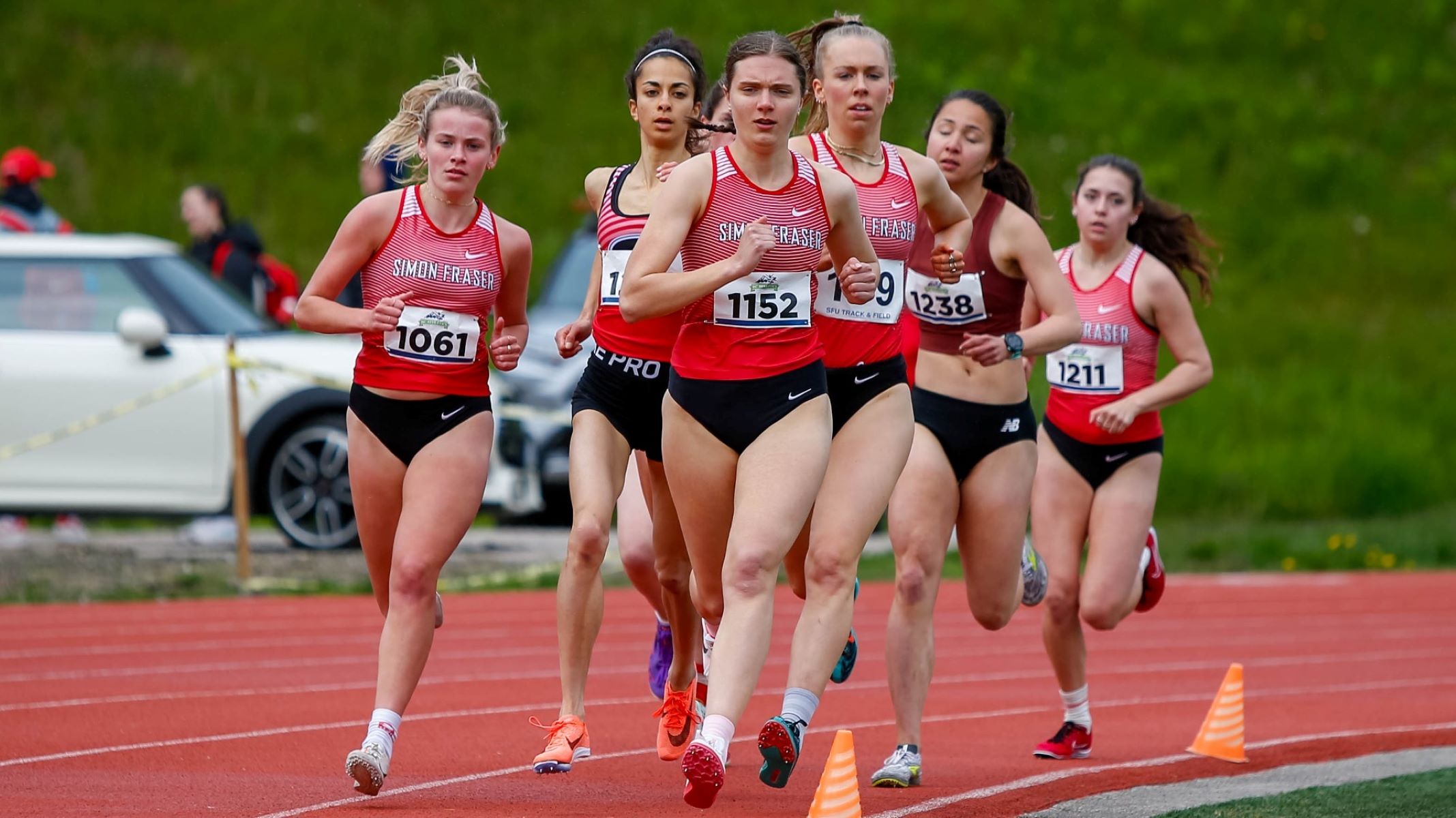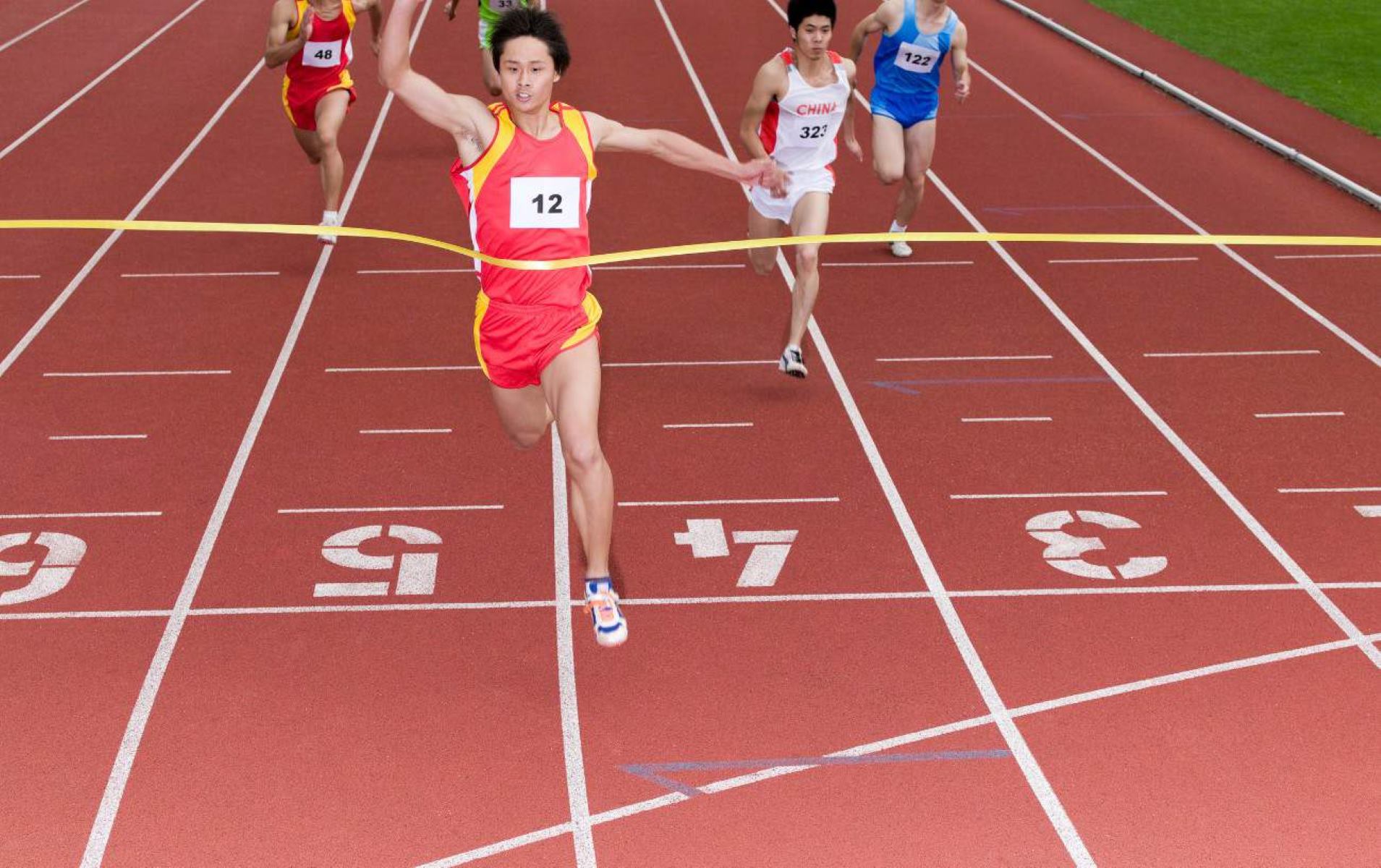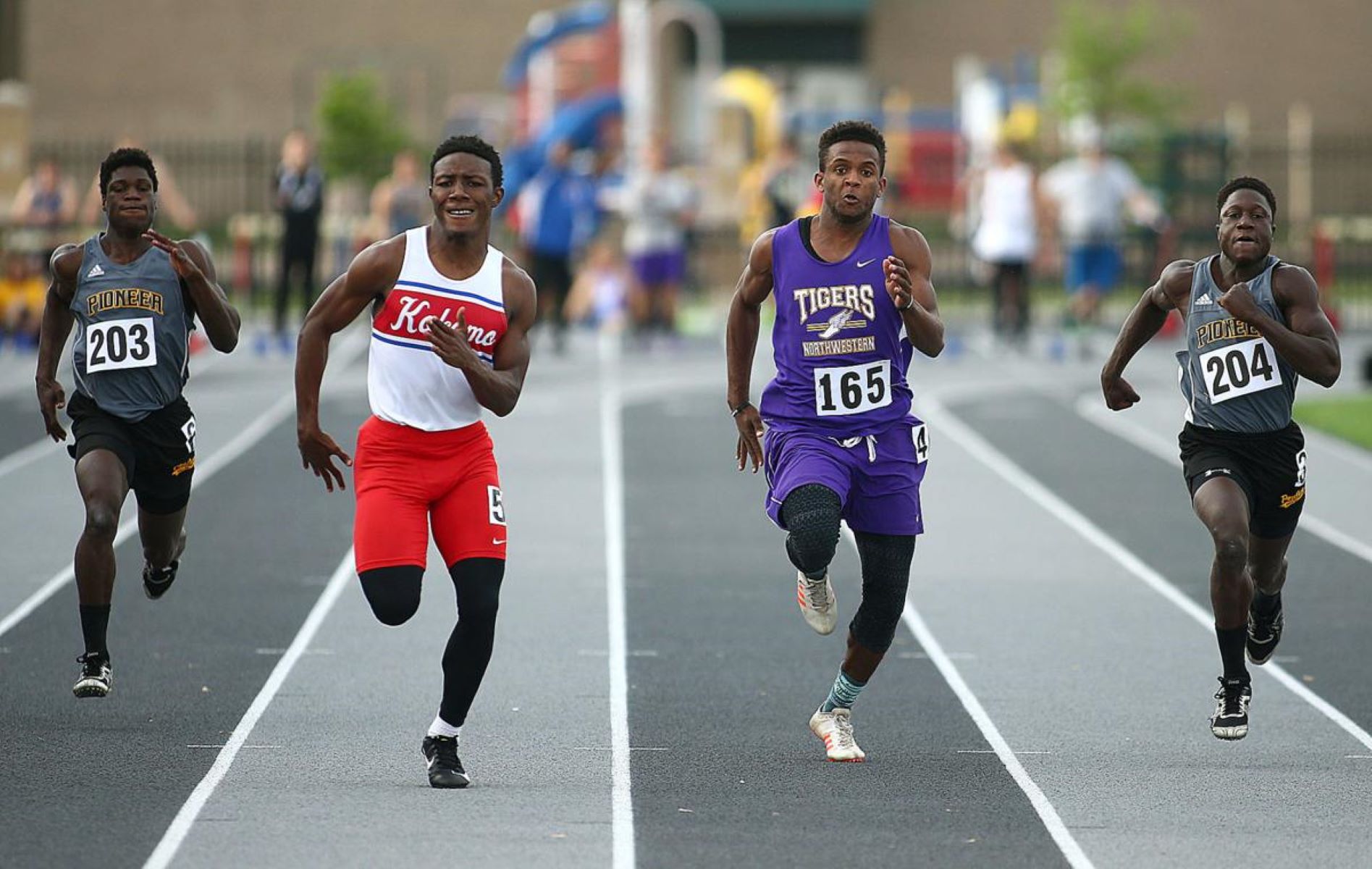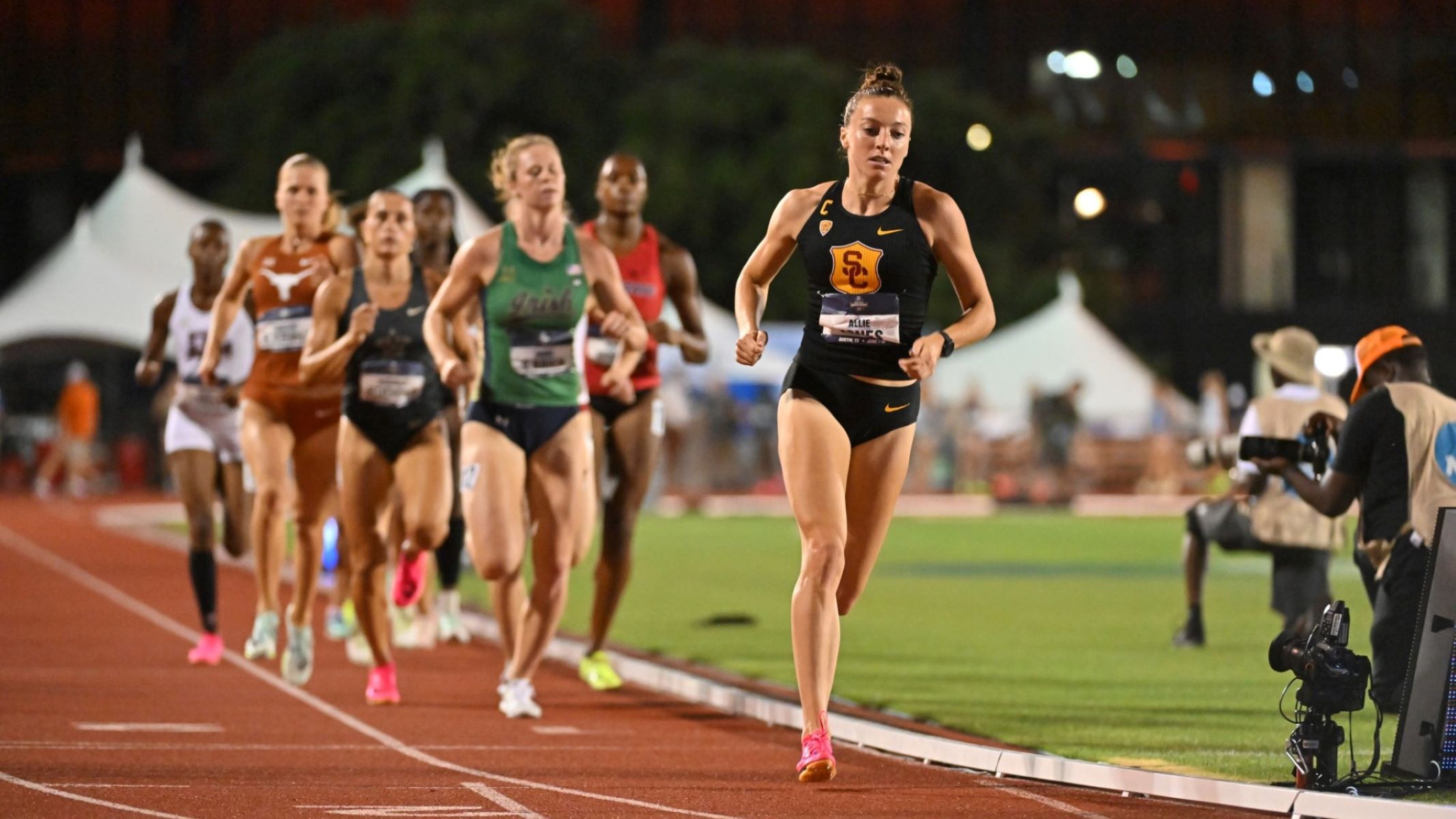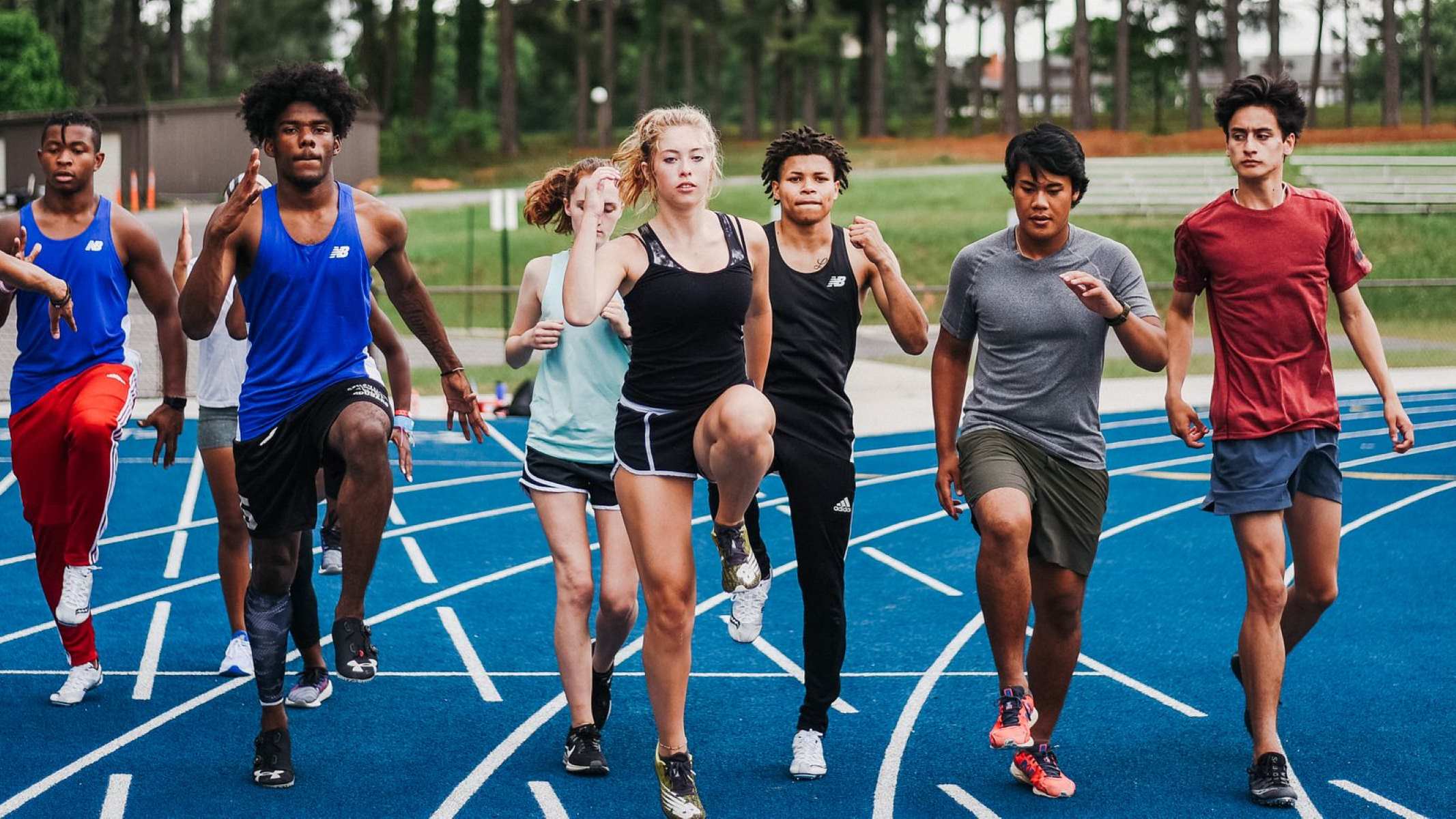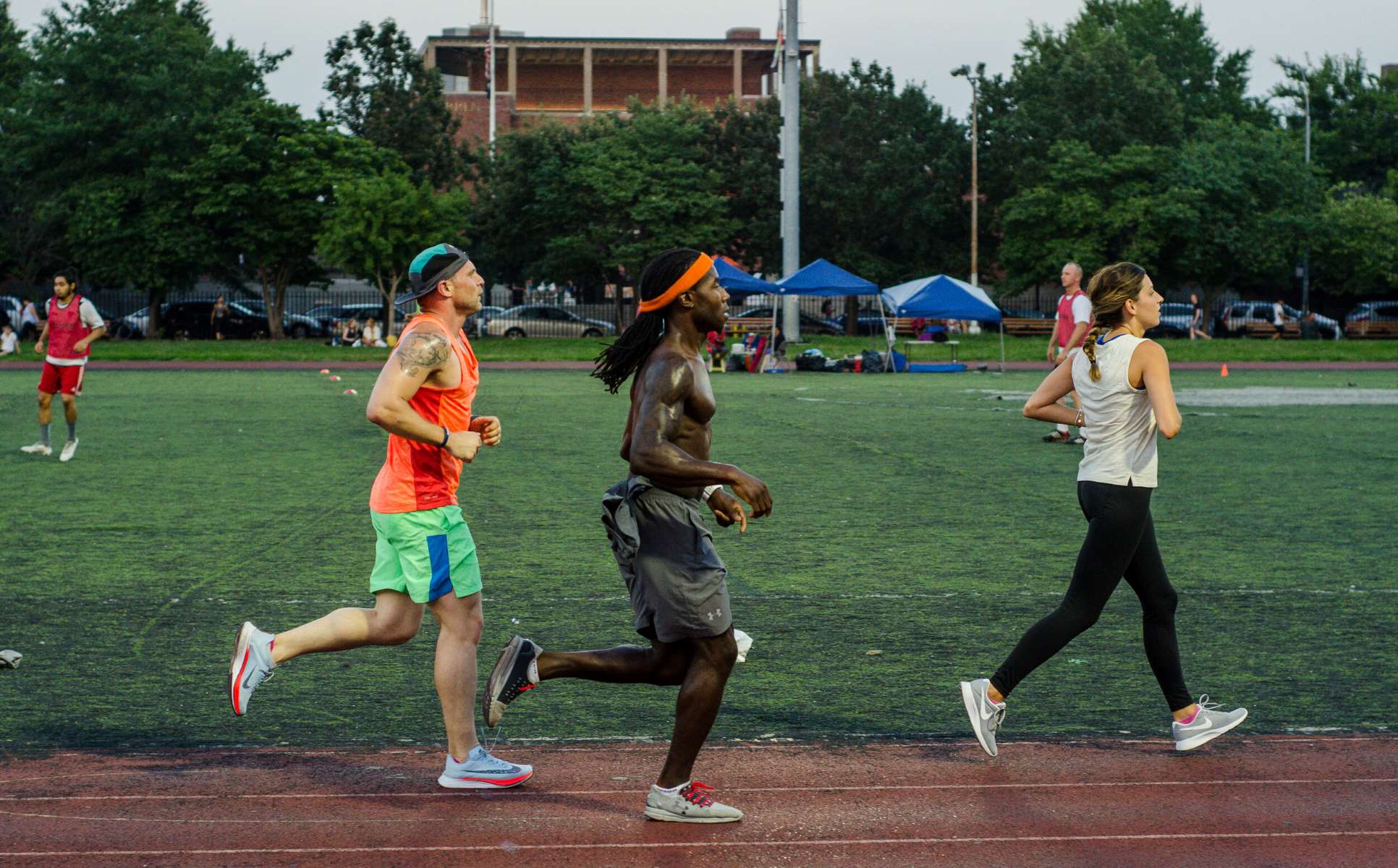Home>Misc>Featured>What You Need To Be A Track And Field Coach
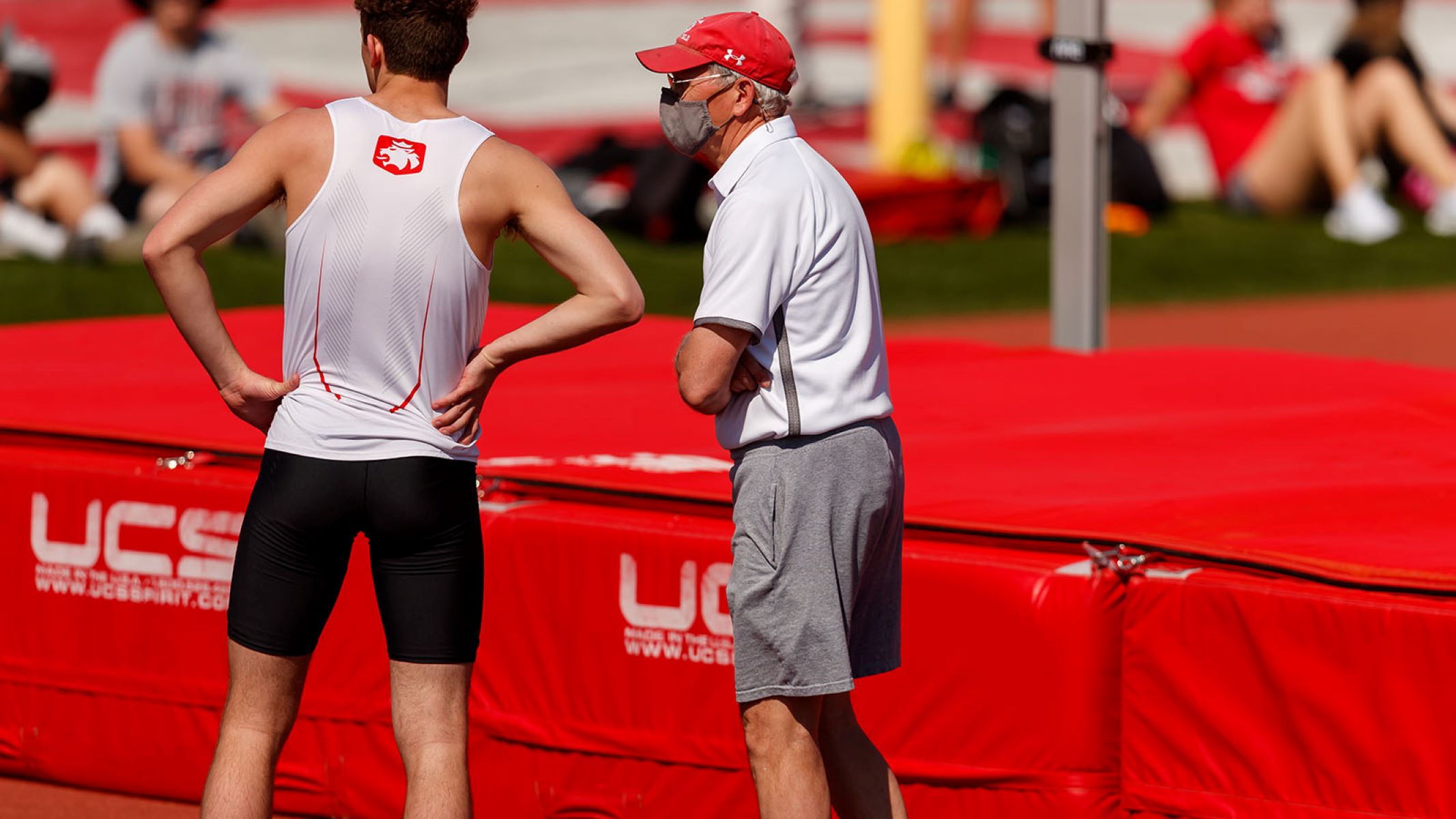

Featured
What You Need To Be A Track And Field Coach
Modified: January 2, 2024
Want to become a track and field coach? Discover the essential skills, qualifications, and experience needed to be a successful coach in this featured guide.
Introduction
Welcome to the exciting world of track and field coaching! As a track and field coach, you have the opportunity to guide and inspire athletes in their pursuit of athletic excellence. Whether you are coaching sprinters, jumpers, throwers, or distance runners, your role is crucial in helping them hone their skills, reach their goals, and unlock their full potential.
Being a track and field coach is not just about supervising practices and meets. It requires a deep understanding of the sport, a passion for helping athletes succeed, and effective coaching techniques to bring out the best in your team. In this article, we will explore the essential qualifications and skills you need to become a successful track and field coach.
Track and field coaching is a demanding and rewarding profession. It requires a strong foundation of knowledge in various areas, including event-specific techniques, injury prevention, training program design, and effective communication. Additionally, possessing leadership skills and the ability to motivate and mentor athletes are vital aspects of being an effective coach.
Throughout this article, we will delve into the key qualifications, certifications, and essential knowledge needed to excel as a track and field coach. We will also explore coaching techniques, safety considerations, as well as the administrative responsibilities that come with the role. So, let’s jump right in and discover what it takes to be a track and field coach!
Qualifications and Certifications
To become a track and field coach, there are certain qualifications and certifications that can help validate your knowledge and skills in the field. While not all coaching positions require these, they can greatly enhance your credibility and improve your chances of securing coaching opportunities.
One of the most recognized certifications in track and field coaching is offered by the U.S. Track & Field and Cross Country Coaches Association (USTFCCCA). The USTFCCCA offers a variety of certifications, including the Track and Field Technical Certification and the Strength and Conditioning Certification, which focus on specific aspects of coaching.
Having a Bachelor’s or Master’s degree in Exercise Science, Physical Education, or a related field can also be advantageous. These degrees provide a solid academic foundation in human physiology, biomechanics, and coaching principles, enabling you to better understand the science behind training and performance optimization.
Additionally, gaining practical experience through coaching internships, assistant coaching positions, or volunteering at local track clubs or high schools can demonstrate your commitment and dedication to the profession. It allows you to gain hands-on experience working with athletes, implementing training programs, and refining your coaching techniques.
While certifications and degrees are valuable, it is important to note that track and field coaching is not solely defined by paper qualifications. Experience, a strong understanding of the sport, and a passion for helping athletes succeed are equally vital. Coaches who have competed as track and field athletes themselves often possess a valuable perspective and firsthand knowledge of the sport.
Ultimately, the qualifications and certifications you pursue should align with your goals as a track and field coach. They should reflect your commitment to continuous learning and professional development, as well as your desire to provide the best coaching experience for your athletes. Remember, coaching is a journey, and the more you invest in your own growth, the better equipped you will be to guide your athletes toward success.
Knowledge of Track and Field Events
As a track and field coach, having a comprehensive understanding of the different events is essential. Each event requires specific skills, techniques, and training methods, and it is your responsibility to guide your athletes in their pursuit of excellence in their chosen disciplines.
To effectively coach track and field events, you need to familiarize yourself with the fundamental aspects of each event category: sprints, jumps, throws, and distance running.
In the sprints, which include the 100m, 200m, and 400m races, emphasis is placed on speed, explosive power, and proper running mechanics. As a coach, you will need to focus on developing acceleration, maintaining top speed, and improving race strategy.
The jumps events, such as long jump, triple jump, and high jump, require athletes to possess a combination of power, speed, technique, and coordination. Coaching these events involves teaching proper take-off techniques, improving approach speed, and refining landing mechanics.
Throws events, including shot put, discus, javelin, and hammer throw, demand strength, technique, and explosiveness. Coaching throwers involves refining throwing technique, increasing power and strength, and implementing specialized training programs tailored to their specific event.
Distance running events, from middle-distance to long-distance races, encompass events like the 800m, 1500m, 5000m, and the marathon. Coaching distance runners involves developing endurance, running efficiency, race strategy, and pacing skills.
Additionally, having knowledge of relay events, hurdles, and pole vault can further enhance your coaching expertise and allow you to provide a well-rounded coaching experience for your athletes.
To deepen your knowledge of track and field events, it is beneficial to attend coaching clinics, workshops, and conferences. These opportunities provide valuable insights from experienced coaches, allow you to learn new training methodologies, and enable you to stay up-to-date with the latest trends and research in the sport.
The more you understand the intricacies of each track and field event, the better equipped you will be to coach your athletes effectively. Tailoring your coaching approach based on the specific demands of each event will help your athletes reach their full potential and achieve success in their respective disciplines.
Coaching Techniques and Strategies
As a track and field coach, your coaching techniques and strategies are crucial in helping athletes improve their performance and achieve their goals. Effective coaching involves a combination of technical instruction, motivation, and strategic planning to bring out the best in your athletes.
One essential coaching technique is providing clear and concise instructions to athletes. Breaking down complex movements or techniques into simple and manageable steps can help athletes grasp the fundamentals and execute them effectively. Visual demonstrations, video analysis, and feedback are useful tools in helping athletes understand and implement correct techniques.
Creating a positive and encouraging training environment is also important. Building strong relationships with your athletes, fostering open communication, and providing constructive feedback can help cultivate a supportive and motivating atmosphere. Celebrate successes, no matter how small, and offer encouragement during challenging times to keep athletes focused and motivated.
Individualizing training programs based on each athlete’s strengths, weaknesses, and specific goals is another key coaching strategy. Recognizing that every athlete is unique and adapting training methods to suit their individual needs is essential for maximizing their potential. Customizing workouts, focusing on specific event-specific training, and addressing areas of improvement can yield significant improvements in performance.
Incorporating periodization in your training plans is essential for long-term athlete development. Breaking down the training year into distinct phases, such as the off-season, pre-season, competition season, and rest periods, allows for proper conditioning, skill development, and recovery. Periodization helps athletes peak at the right time and minimizes the risk of overtraining or burnout.
Mental preparation and sports psychology techniques are also valuable coaching strategies. Teaching athletes how to cope with pressure, visualize success, set achievable goals, and maintain focus and confidence are critical for performance optimization. Developing mental toughness and resilience can make a significant difference in competitive situations.
Lastly, a well-structured and organized practice plan is vital. Designing purposeful and progressive workouts that include warm-ups, skill drills, event-specific training, strength and conditioning exercises, and cool-downs ensures that training sessions are efficient and effective. Providing a clear schedule and outlining expectations helps athletes stay focused and committed.
By effectively implementing coaching techniques and strategies, you can guide your athletes towards continual improvement and success in their track and field endeavors. Your expertise, support, and guidance play a pivotal role in unlocking your athletes’ potential and helping them achieve their dreams.
Injury Prevention and Safety
As a track and field coach, ensuring the safety and well-being of your athletes should be a top priority. Track and field is a physically demanding sport that involves explosive movements, high impact activities, and repetitive motions. Therefore, it is crucial to implement proper injury prevention strategies and create a safe training environment.
One of the key aspects of injury prevention is proper warm-up and cool-down routines. Before every training session or competition, athletes should engage in a dynamic warm-up to prepare their bodies for the demands of the sport. This should include exercises that activate and mobilize key muscle groups, increase heart rate and blood flow, and improve flexibility. Similarly, a thorough cool-down routine that includes static stretching and gentle recovery exercises can help prevent muscle soreness and promote recovery.
Proper technique and form are essential in minimizing the risk of injuries. As a coach, you should ensure that athletes understand and execute correct movement patterns for their respective events. Regular video analysis, feedback, and individualized coaching can help identify and correct any technical flaws that may increase the risk of injury.
Monitoring training load and intensity is crucial to prevent overuse injuries. Gradually increasing training volume and intensity allows the body to adapt and reduces the chances of overexertion. Implementing rest days and recovery periods into training programs is equally important to prevent fatigue and allow for adequate recovery.
Equipment plays a significant role in injury prevention as well. Ensuring that athletes have access to appropriate footwear, protective gear, and well-maintained training facilities can help minimize the risk of injuries. Regularly inspecting equipment and facilities for any hazards or potential safety issues is imperative to maintain a safe training environment.
Education is key in injury prevention. Educate your athletes about the importance of proper nutrition, hydration, and sleep in supporting their overall health and recovery. Teach proper body mechanics and encourage athletes to listen to their bodies and report any signs or symptoms of injury promptly.
In the unfortunate event of an injury, it is vital to have knowledge of basic first aid and CPR. Having a designated emergency action plan in place and being trained to handle emergencies can make a critical difference in providing immediate care and minimizing further damage.
By prioritizing injury prevention and safety, you not only help your athletes stay healthy and perform at their best but also foster a culture of well-being and support within your track and field program. A safe and injury-free environment allows athletes to focus on their training, enjoy the sport, and excel in their athletic endeavors.
Effective Communication and Leadership Skills
Effective communication and leadership skills are vital for any track and field coach. As a coach, you must be able to effectively convey information, establish rapport with your athletes, and inspire them to reach their full potential. Let’s explore the importance of effective communication and leadership skills in the realm of track and field coaching.
Clear and concise communication is essential in conveying instructions, expectations, and feedback to your athletes. Whether it’s explaining new training techniques, providing feedback on performance, or discussing team goals, the ability to articulate your thoughts and ideas clearly fosters understanding and ensures that your athletes are on the same page.
Listen actively to your athletes. By actively listening, you show respect and empathy, and you gain deeper insight into their needs, concerns, and aspirations. Understanding their perspectives allows you to tailor your coaching approach to meet their individual needs and motivations.
Building effective relationships with your athletes is crucial for fostering trust and teamwork. Show genuine interest in their lives, aspirations, and challenges. Be approachable, supportive, and empathetic. Celebrate their successes and provide encouragement during difficult times. Positive and authentic relationships create an environment where athletes feel comfortable seeking guidance and working together.
Leadership is about more than just giving orders. It’s about inspiring and motivating your athletes to strive for greatness. Lead by example, demonstrate integrity, and set high standards in training, behavior, and sportsmanship. Your actions will influence your athletes and shape their attitudes and work ethic.
Delegate responsibilities and empower your athletes to take ownership of their training. Encourage their input and involve them in decision-making processes. This not only develops their leadership skills but also fosters a sense of ownership and accountability within the team.
Adaptability is an important aspect of leadership in track and field coaching. Every athlete is unique, with different strengths, weaknesses, and learning styles. Being flexible and adjusting your coaching approach to suit individual athletes ensures that they receive the support and guidance they need to excel.
Effective communication and leadership skills extend beyond interactions with athletes. They are also essential for engaging with other coaches, parents, and administrative staff. Building strong relationships and maintaining open lines of communication with all stakeholders contributes to a cohesive and supportive track and field program.
Continually work on developing your communication and leadership skills. Attend professional development workshops, seek mentorship from experienced coaches, and invest in personal growth. The more effectively you communicate and lead, the more impactful your coaching efforts will be, and the more successful your athletes will become.
Training Program Design and Periodization
Training program design and periodization are key components of successful track and field coaching. By developing well-structured, progressive, and individualized training plans, you can optimize your athletes’ performance and help them reach their goals. Let’s explore the importance of training program design and periodization in track and field coaching.
A training program should be tailored to the specific needs and goals of each athlete. It should take into account their current fitness level, event specialization, strengths, weaknesses, and competition schedule. By individualizing training programs, you can address the unique requirements of each athlete and maximize their potential.
Periodization is an essential aspect of training program design. It involves dividing the training year into distinct phases, each with a different focus and objective. The typical periodization model includes the off-season, pre-season, competition season, and rest periods. Each phase has specific training goals, intensity levels, and training modalities.
In the off-season, the emphasis is on establishing a solid foundation, building overall strength, addressing weaknesses, and developing aerobic capacity. During this time, athletes engage in general conditioning exercises, strength training, and endurance workouts to prepare their bodies for more sport-specific training.
The pre-season phase involves transitioning into event-specific training. Athletes focus on refining technique, developing power, and improving speed and agility. This is also the time to implement interval training, specific drills, and simulations of competition scenarios.
During the competition season, the training shifts towards maintaining and fine-tuning performance. Workouts become more race-specific, and athletes focus on peaking for specific competitions. Recovery periods and tapering become essential to ensure athletes are fresh and ready to perform at their best.
Rest periods are equally important in a well-designed training program. They allow athletes to recover, recharge, and prevent overtraining. Rest periods can be weekly, monthly, or seasonally, depending on the individual needs of athletes. During rest periods, athletes engage in active recovery, such as light training or cross-training, to maintain fitness levels while giving their bodies a break from intense training.
Regular evaluation and adjustment of training programs are necessary for success. Monitor athletes’ progress, assess their performance, and modify training plans as needed. Adaptations may include increasing training volume, adjusting intensity, incorporating new training techniques, or addressing weaknesses that have been identified.
Implementing periodization and proper training program design ensures that athletes progress gradually, minimize the risk of overuse injuries, and peak at the right times. It also provides a sense of structure and purpose to training, resulting in increased motivation and focus for both athletes and coaches.
Remember, each athlete is unique, and training program design should be tailored to their specific needs. By considering individual characteristics, implementing periodization, and regularly evaluating and adapting training plans, you can empower your athletes to achieve their highest level of performance in track and field events.
Equipment and Facilities Management
Proper equipment and facilities management is vital for track and field coaches to create a safe, productive, and efficient training environment. Ensuring that athletes have access to the necessary equipment and well-maintained facilities is essential for their development and success. Let’s explore the importance of equipment and facilities management in track and field coaching.
Having the right equipment is crucial for athletes to perform at their best and minimize the risk of injury. Track and field coaches should ensure that athletes have access to appropriate footwear, training implements, and safety gear specific to their events. Regularly inspecting equipment for wear and tear and replacing or repairing any damaged equipment is imperative to maintain a safe training environment.
Effective storage and organization of equipment is essential for easy access and efficient training sessions. Coaches should establish a system for equipment management, ensuring that everything is properly stored, well-maintained, and readily available when needed. This minimizes time wasted searching for equipment and allows athletes to focus on their training.
Facilities management involves ensuring that training venues and tracks are well-maintained and safe for athletes. Inspection of facilities for any hazards, such as potholes, broken equipment, or slippery surfaces, is necessary to prevent accidents. Additionally, proper lighting, ventilation, and signage contribute to a comfortable and secure training environment.
Creating a schedule and coordinating facility usage is important, especially when sharing training venues with other sports teams or clubs. Effective communication with other coaches and administrators helps avoid conflicts or overlapping schedules, ensuring that athletes have uninterrupted access to facilities when needed.
Coaches should also consider the availability and accessibility of facilities for athletes with disabilities. Ensuring that facilities comply with accessibility guidelines and are inclusive for all athletes promotes equal opportunities and a supportive training environment for everyone.
Regular maintenance of facilities and equipment is essential to preserve their functionality and longevity. Coaches should establish routines for cleaning, inspecting, and repairing equipment and facilities. This includes regular sweeping and maintenance of track surfaces, ensuring proper functionality of equipment such as starting blocks or hurdles, and addressing any repairs or maintenance needs promptly.
Ultimately, effective equipment and facilities management contributes to a positive training experience for athletes. It ensures their safety, allows for efficient training sessions, and provides the necessary resources for them to excel in their sport. By prioritizing equipment and facilities management, track and field coaches can create an optimal training environment that supports the development and success of their athletes.
Administrative Responsibilities
Administrative responsibilities are an integral part of being a track and field coach. While coaching athletes is the primary focus, there are several administrative tasks that coaches must handle to ensure the smooth operation of their track and field program. Let’s discuss some of the key administrative responsibilities of a track and field coach.
One of the primary administrative tasks is managing team registration and paperwork. Coaches are responsible for collecting and maintaining accurate athlete information, including emergency contact details, medical history, and consent forms. This information is crucial for ensuring athletes’ safety and for compliance with any legal or organizational requirements.
Budgeting and financial management are essential aspects of track and field coaching. Coaches often need to develop and maintain a budget for the program, which includes expenses such as equipment, uniforms, travel expenses, and entry fees for competitions. Coaches must ensure that finances are managed effectively and transparently, including tracking expenses, maintaining receipts, and seeking funding opportunities if necessary.
Scheduling and coordination are important administrative tasks that coaches must handle. This includes developing training schedules, arranging practice times, and organizing competitions and meets. Coaches may also need to coordinate transportation for team travel, book accommodation for away competitions, and secure venues for training or events. Effective communication with athletes, parents, and other coaches is crucial for ensuring everyone is aware of the schedule and any changes or updates.
Coaches often serve as the main point of contact for parents and guardians. This includes relaying important information, addressing concerns, and providing updates on athlete progress and performance. Maintaining open and proactive communication with parents helps foster a positive and supportive relationship between the coach, athletes, and parents.
Record keeping is essential for track and field coaches. Keeping accurate records of athlete performance, training progress, and competition results allows coaches to track individual and team successes, monitor improvements, and make data-driven decisions about training and competition strategies. Coaches may also need to maintain records for administrative purposes, such as athlete eligibility and participation in competitions.
Compliance with organizational policies and regulations is another important administrative responsibility. Coaches must familiarize themselves with the rules and regulations of the governing bodies that oversee track and field, such as school associations or national governing bodies. Staying up-to-date with any rule changes, eligibility requirements, or coaching certifications ensures compliance and supports a fair and inclusive playing field for all athletes.
Lastly, coaches may be involved in program promotion and recruitment. This includes marketing the track and field program, conducting tryouts or talent identification, and attracting athletes to join the team. Coaches may collaborate with school or club administrators, attend recruitment events, and engage with local schools or community organizations to promote the program and recruit talented athletes.
By effectively managing their administrative responsibilities, track and field coaches can create a well-organized and successful program. While coaching athletes remains the heart of the job, attending to administrative tasks ensures that the program operates efficiently and provides a positive experience for all involved.
Motivating and Mentoring Athletes
Motivating and mentoring athletes is a critical role of a track and field coach. The ability to inspire and guide athletes on their journey towards success is essential for fostering development, building confidence, and maintaining a positive team culture. Let’s explore the importance of motivating and mentoring athletes in the realm of track and field coaching.
Motivation is the driving force behind athletes’ commitment, effort, and perseverance. As a coach, it is your responsibility to ignite and sustain that motivation. Recognize that each athlete is unique in terms of what inspires and motivates them. Taking the time to understand their individual goals, aspirations, and challenges allows you to tailor your coaching approach and provide the necessary support.
Setting challenging yet attainable goals is essential for motivation. Work with athletes to establish both short-term and long-term goals that are specific, measurable, achievable, relevant, and time-bound (SMART goals). Regularly revisit these goals, monitor progress, and provide positive reinforcement when milestones are achieved.
Positive reinforcement is a powerful tool in motivating athletes. Celebrate their successes, no matter how small, and provide specific feedback on their achievements. This not only boosts their confidence but also reinforces their belief in their abilities and motivates them to continue working hard.
Creating a supportive and inclusive team culture is crucial for athlete motivation. Encourage teamwork, collaboration, and respect among team members. Foster an environment where athletes feel valued, supported, and included. Building strong relationships and promoting a sense of belonging within the team creates a positive atmosphere that motivates athletes to perform at their best.
Mentoring athletes goes beyond training and competition. It involves providing guidance, support, and role modeling in various aspects of their lives. As a mentor, you can help athletes develop essential life skills such as time management, goal setting, resilience, and decision-making.
Offer guidance and advice during challenging times. Athletes may encounter setbacks, injuries, or performance slumps that can be discouraging. Be there to listen, empathize, and help them develop coping strategies. Your mentorship can help athletes navigate through difficult periods and emerge stronger than before.
Encourage athletes to take ownership of their development. Promote self-reflection and self-assessment, encouraging them to identify their strengths and areas of improvement. Collaboratively develop action plans to address weaknesses and provide resources and opportunities for growth.
Communication is key in mentoring athletes. Regularly check in with athletes, have one-on-one discussions, and provide constructive feedback. Ask open-ended questions to encourage critical thinking and reflection. Effective communication builds trust, strengthens the coach-athlete relationship, and allows for mentorship to thrive.
Lastly, lead by example. As a coach, your actions and behaviors have a powerful influence on athletes. Demonstrate dedication, professionalism, and a growth mindset. Show them what it means to be resilient, committed, and passionate about the sport.
By fostering a supportive and motivating environment and serving as a mentor for your athletes, you can help them develop not only as athletes but also as individuals. The impact of a coach’s guidance and support can last a lifetime and contribute to the long-term success and well-being of athletes on and off the track.
Conclusion
Being a track and field coach is a rewarding and challenging endeavor that requires a combination of expertise, passion, and effective coaching techniques. Throughout this article, we have explored the essential qualifications, knowledge, and skills needed to excel as a track and field coach.
Qualifications and certifications can enhance your credibility and demonstrate your commitment to professional development. Knowledge of track and field events is essential for providing effective coaching in different disciplines. Coaching techniques and strategies, such as clear communication and individualized training programs, help athletes reach their full potential.
Injury prevention and safety are paramount in ensuring the well-being of athletes. Effective communication and leadership skills inspire and empower athletes to achieve their goals. Training program design and periodization enable athletes to progress systematically and peak at the right times.
Proper equipment and facilities management create a safe and efficient training environment. Administrative responsibilities ensure the smooth operation of the track and field program. Lastly, motivating and mentoring athletes foster their personal and athletic development.
As a track and field coach, you have the incredible opportunity to impact the lives of your athletes. Your knowledge, guidance, and support can shape their athletic journeys, instill confidence, and inspire them to reach for their dreams.
Remember to continuously seek opportunities for professional growth, stay updated with the latest trends in the sport, and always prioritize the safety and well-being of your athletes. With dedication, passion, and a commitment to ongoing improvement, you can become an exceptional track and field coach who makes a lasting impact in the lives of your athletes.
